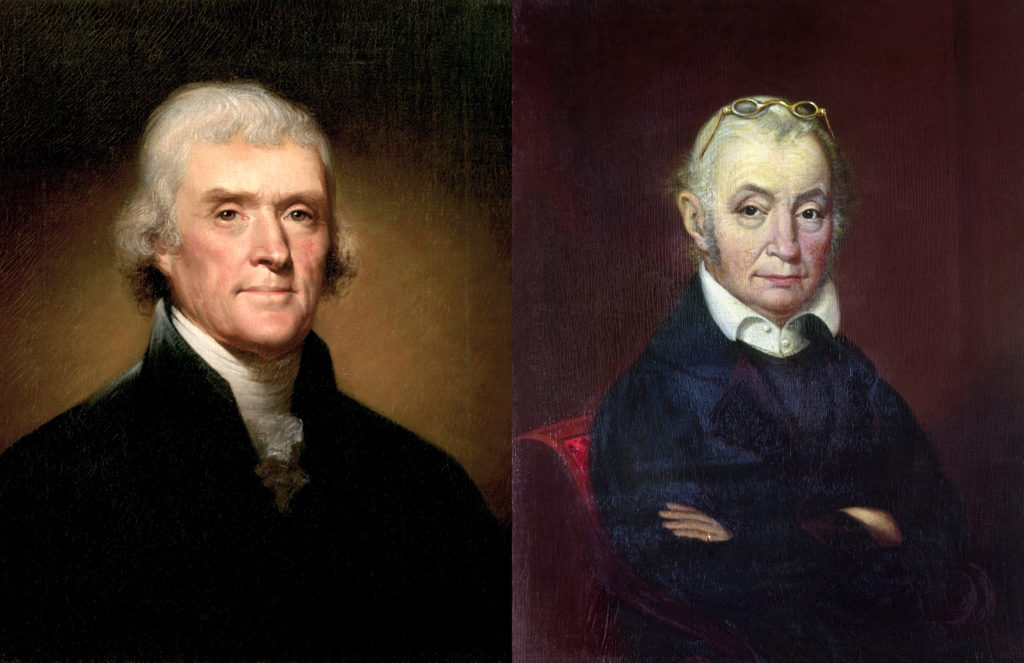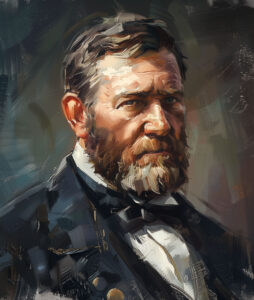After 750 attempts to reform or eradicate it, the system remains in place
It’s an institution many Americans love to hate. Its name suggests the groves of academe, but it has no physical campus. It convenes quadrennially without actually meeting. Members vote decisively but do not choose. And despite more than 750 attempts at reform or extirpation, this historic entity staggers on, strong as ever, a central component in American politics. Designed by the Founding Fathers with the best of intentions, it has become something they would not recognize.
It’s the U.S. Electoral College.
The 55 delegates gathering in Philadelphia in May 1787 for the Constitutional Convention—“an assembly of demigods,” in Thomas Jefferson’s words—had as their mission the creation of a system of government. Among their many tough calls, the delegates had to determine the process by which the new nation would be choosing its chief executive—“the most difficult of all on which we have had to decide,” delegate James Wilson of Pennsylvania said.
The Convention considered 11 methods of presidential selection. An early favorite was having Congress do the electing.
This approach found favor with delegates of like mind with Roger Sherman of Connecticut, who declared that he saw the presidency as “nothing more than an institution for carrying the will of the Legislature into effect.”
Not everyone involved agreed. “If the Legislature elect, it will be the work of intrigue, of cabal, of faction,” Gouverneur Morris of Pennsylvania said. James Madison of Virginia feared that taking the congressional path would make the chief executive a slave to Congress.
An obvious alternative was direct election by popular vote, with candidates’ state tallies aggregated into national totals. Morris thought this fit best. “[T]he Executive Magistrate should be the guardian of the people, even of the lower classes, [against] Legislative tyranny,” he said. “If he is to be the Guardian of the people let him be appointed by the people.” Wilson agreed, calling direct election “both a convenient & successful mode.” However, this was a minority position; many delegates simply did not trust the voting public—which in many states was limited to white males who owned significant property. George Mason of Virginia derided as “unnatural” handing that choice to voters, which he likened to asking a blind man to choose a color. Elbridge Gerry of Massachusetts worried that “pretended patriots” would dupe the masses.
Mason’s and Gerry’s elitism had a practical aspect. The only semblance of mass communication was print, and literacy was not a given. The average voter would not be “sufficiently informed of [national] characters” to make intelligent choices, Sherman said. Mason did not want to entrust “an act which ought to be performed by those who know most of Eminent characters & qualifications” to “those who know least.” Direct election was ruled out.
The delegates also rejected selection by state legislatures or governors. A proposal to have 15 congressmen picked by lot choose the president failed because “[i]f the lot should fall on a sett [sic] of unworthy men, an unworthy Executive must be saddled on the Country,” Gerry said. On August 31, 1787, after more than three months of deliberations, delegates referred the question of how to pick a president to the Convention’s Committee of Eleven on Postponed Matters, to which fell such other knotty decisions as the precise power of Congress to levy taxes and the length of a president’s term of office.
In only four days, the Committee of Eleven came up with a recommendation to have a select group of appointed individuals make the choice of chief executive. The delegates called these individuals “electors,” perhaps a reference to medieval princes who selected the Holy Roman Empire’s leader. Under this plan, reflecting efforts to balance the interests of small and large states, each state would be assigned a number of electors equal to the sum of its senators and representatives. Each state’s legislature would decide how that state would appoint electors. The candidate winning a majority of the electoral votes cast would become chief executive. If no candidate received a majority or if candidates tied, the House of Representatives would choose from among the top vote-getters in a “contingent election.” On September 7, 1787, the delegates adopted this plan.
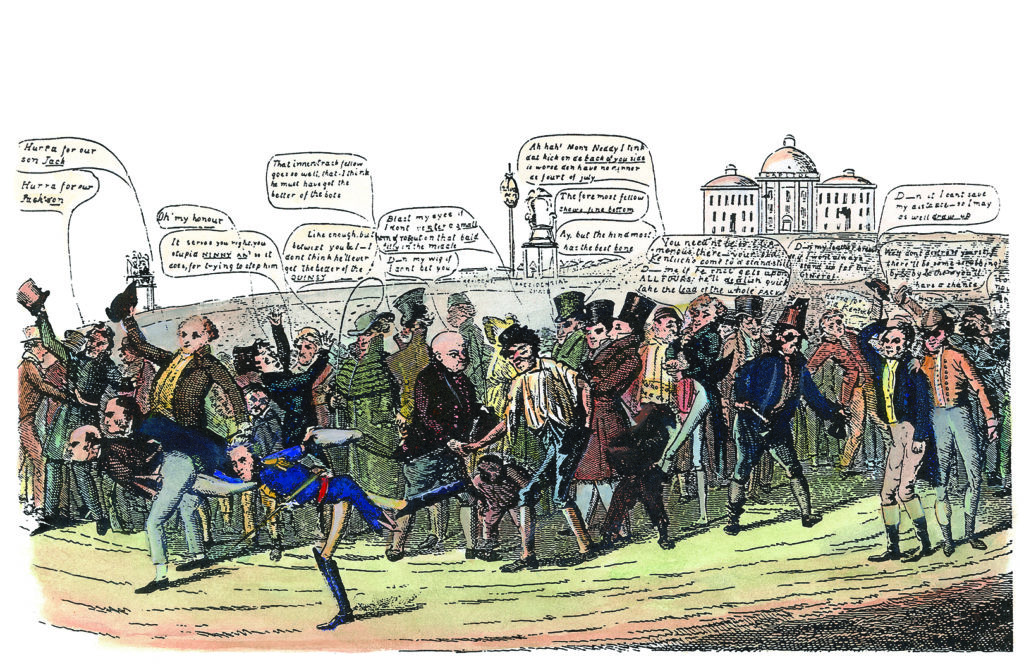
The Framers envisioned that the electors who would make this momentous decision every four years would be nonpartisan free agents acting with an eye toward nothing except the public weal. The electors were to be the nation’s best and brightest, individuals “most likely to possess the information and discernment requisite to such complicated investigations,” Alexander Hamilton of New York said. While the Framers gave each state legislature unfettered discretion in deciding how to choose that state’s electors, they envisioned each state being divided into as many districts as it had electoral votes, Madison wrote in 1823. The popular vote in each district would determine which candidate got that district’s vote. To discourage conflicts of interest, the Framers barred from electors’ ranks any senator, congressman, or “Person holding an Office of Trust or Profit under the United States.” Nor were electors allowed to meet as a national body. Rather, each state’s electors would convene. The ban on a national conclave sought to discourage political horse-trading and “the great evil of cabal.”
Constitutional Convention delegates, worn out from meeting six days a week in stifling heat for three months, knew they had not devised a perfect system but, as Morris put it, they had gone for the least objectionable choice. Noting the “objections [against] every mode that has been, or perhaps can be proposed,” Madison explained that the delegates had found “no better way…than that delineated in the plan of the convention…” Madison also admitted his colleagues were not “exempt from a degree of the hurrying influence produced by fatigue & impatience…” Only Hamilton brimmed with optimism, calling the system chosen “at least excellent.”
Neither the Convention nor the Constitution collectively called electors a “college.” Newspapers first used the term “Electoral College” in the early 1800s, perhaps invoking Roman Catholicism’s term for the conclave of cardinals assembled in order to choose a pope. Congress made the designation official in 1845.
Reality briskly intruded on the dream of apolitical beneficence. In the first presidential election, a squabble deadlocked New York legislators over how to select that state’s electors, and New York’s 12 electoral votes went uncast. When George Washington left office after electors twice had voted unanimously to make him president, political parties emerged, and with them, party loyalty. Party sachems took care to nominate electors guaranteed to toe the party line, some going as far as to require would-be electors to pledge formally to vote as the party dictated. The public-spirited free agents the Framers had envisioned devolved into “party lackeys and intellectual nonentities,” Supreme Court Justice Robert H. Jackson wrote in 1952. This pattern consigned the Electoral College to “atrophy almost indistinguishable from rigor mortis,” Jackson wrote. Electors became useless, Senator Thomas Hart Benton (Democratic- Republican-Missouri) said in 1824, because they lost “power over their own vote.” Chosen not for knowledge or judgment, they were picked “for their devotion to a party, their popular manners, and a supposed talent at electioneering,” a Senate committee noted in 1826.
Voters, too, came to expect electors to do only as they were told. In 1796, Pennsylvania elector Samuel Miles, pledged to John Adams, instead cast his ballot for Jefferson. An angry Adams supporter wrote to the United States Gazette, “[D]o I chuse Samuel Miles to determine for me whether John Adams or Thomas Jefferson is the fittest man for President of the United States? No—I chuse him to act, not to think.” Reduction of electors to party pawns saddened Senator Rufus King (Federalist-New York), who had been a Constitutional Convention delegate and was defeated for the presidency in 1816 by Secretary of State James Monroe (Democratic-Republican-Virginia). “The election of a President of the United States is no longer that process which the Constitution contemplated,” King lamented in March 1816, before the election..
Another factor twisting the elector system was the latitude granted state legislatures in choosing electors. In some states, the legislature itself picked electors, inherently guaranteeing a state’s electoral votes to the party controlling the statehouse. Other legislatures based electoral voting on the popular vote under one of two systems. With the district system, each jurisdiction’s popular vote determined which candidate got that district’s electoral vote. District system states could and often did split electoral votes. The other method was the “general ticket,” in which the candidate winning the statewide popular vote got all that state’s electoral votes, whether he won by a slim margin or a landslide. The general ticket and selection by the legislature were winner-take-all systems.
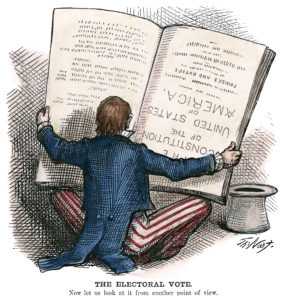
Method could swing an election. In 1796, John Adams (Federalist-Massachusetts) defeated Jefferson (Democratic-Republican-Virginia), 71 electoral votes to 68. Jefferson strongholds North Carolina and Virginia—the latter, at 21 electoral votes, the largest bloc in the country—used districts and split their votes, with one district in each state going for Adams. Had those states had general tickets, Jefferson would have been the second president.
Because splitting electoral votes lessened a state’s influence on the national election, winner-take-all arrangements favored the majority party in a given state while disadvantaging states using the district system. Out of self-defense, Virginia switched to a general ticket before the 1800 election. “[A]n election by districts would be best,” Jefferson wrote to Madison in 1800, but because 10 of the 16 states already used winner-take-all systems, “it is folly & worse than folly for the other 6 not to do it.”
System-switching, even between winner-take-all methods, was a clever way to lend muscle to a state’s controlling party amid shifting political winds. In 1812, New Jersey’s Federalist-controlled legislature favored Federalist-backed presidential candidate DeWitt Clinton. Jersey legislators feared that their state’s popular vote would go to Democratic-Republican James Madison. Three days before the election took place, the New Jersey legislature switched from a general ticket to selection by the legislature, a shift that guaranteed Clinton would receive the state’s eight electoral votes. “What will the People say to this high handed, this outrageous proceeding?” a Newark newspaper asked. New Jersey reverted to the general ticket in time for the next election.
Massachusetts changed systems in every election between 1796 and 1820. Other states switched periodically, too. These shenanigans caused Senator Mahlon Dickerson (Democratic-Republican-New Jersey) to complain in 1818 of the “constant fluctuation and change—of frequent, hasty, and rash experiment—established, altered, abolished, re-established, according to the dictates of the interest, the ambition, the whim or caprice, of party and faction.” By 1836, winner-take-all had become the rule. Today, 48 states and the District of Columbia use the general ticket. Only Maine and Nebraska have reverted to district systems, Maine before the 1972 election and Nebraska in time for the 1992 contest.
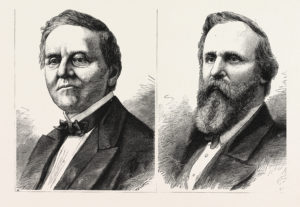
Nearly since Day One, reformers have been going after the Electoral College. As of 2017, advocates had floated 752 bills, ranging from sensible to screwball, to recast or end the system.
In January 1797, less than a decade after the Constitutional Convention, Representative William L. Smith (Federalist-South Carolina) recommended amending the Constitution so that electors would have to distinguish between votes cast for president and for vice president. Congress let Smith’s idea lie until after the 1800 election, when the two-ballot system led to an electoral college tie between Jefferson and his running mate, Aaron Burr, and required a contingent election in the House that took 36 ballots to resolve. Smith’s suggestion became the 12th Amendment in 1804.
In 1808, Senator James Hillhouse (Federalist-Connecticut) proposed an elaborate fix featuring a one-year term for the president. Senators would be limited to one three-year term, with a third of the Senate retiring each year. Annually, balls in the number of retiring senators would be placed in a box. Every ball but one would be white. Retiring senators, blindfolded and in alphabetical order, each would draw a ball. The lame-duck senator drawing the colored ball would be president of the United States for the next year. Hillhouse’s goal was to remove partisanship from presidential campaigns. “Whenever a free people become so divided into parties… all elections and appointments to office become a struggle between the ins and the outs,” he said. Future president John Quincy Adams was not persuaded, observing that “serious discussion” of Hillhouse’s plan “would be ridiculous.”
In 1816, in the first of many such attempts, Senator Abner Lacock (Democratic-Republican-Pennsylvania) introduced a bill calling for choosing the president according to the nationwide popular vote. “What could make us so much one people, as to give to all the people this general equal privilege?” Lacock asked. The 14th Congress trusted the people no more than the Convention had and rejected that plan the day Lacock introduced it.
In the 1824 election, Andrew Jackson (Democratic-Republican-Tennessee) won both the popular vote and the electoral vote but lost to John Quincy Adams, who had abandoned his father’s Federalists for the Democratic-Republican Party—because two lesser candidates siphoned off votes that cost Jackson a majority of the electoral votes cast. The contest went to the House, which chose Adams, allegedly amid shady dealings. This episode sparked a host of reform proposals. In 1825, Representative Romulus M. Saunders (Democratic-Republican-North Carolina) suggested making the candidate with the most electoral votes president even without a majority. In 1826, Representative William McManus (National Republican-New York) pushed replacing the Electoral College with the national popular vote. Representative Joseph Hemphill (Jacksonian-Pennsylvania) urged that contingent elections become popular vote runoffs between the top two vote-getters. When, after an 1828 rematch with Adams, Jackson took the White House, he backed the popular vote. “So far, therefore, as the people can with convenience speak, it is safer for them to express their own will,” Jackson said. None of these ideas became law.
In 1846, Rep. Samuel F. Vinton (Whig-Ohio) pushed for a variation on the presidential lottery rejected in 1816. Balls would be inscribed with each state’s name. Each state would get as many balls as it had electoral votes. The balls would go into an urn and be stirred. One ball would be picked. The presidency would go to the candidate who had won the popular vote in the state whose ball was drawn. In 1848, Representative William T. Lawrence (Whig-New York) introduced a bill to award each state’s electoral votes in proportion to that state’s popular vote. Neither bill survived.
In the first such breakdowns since 1824, the winners of the popular vote lost in the Electoral College in 1876 and 1888. State officials continued to seek advantage by toying with elector selection. In 1890, when Democrats took control of Michigan’s statehouse in that usually Republican state, they traded a general ticket for a district system, hoping to see at least a few districts go Democrat. Less than a month before the 1892 election, the U.S. Supreme Court upheld the switch, and five of Michigan’s 14 electoral votes went to the winner, Democrat Grover Cleveland. Republicans retook control before the next election and went back to a general ticket.
Another Electoral College misfire nearly occurred in 1916, when Democrat Woodrow Wilson beat Republican Charles Evans Hughes by 500,000 votes nationwide. A shift of only 4,000 votes in California would have made Hughes president, thanks to the Electoral College.
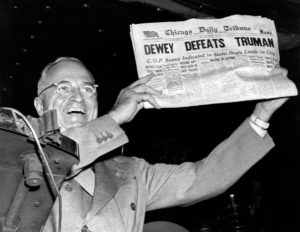
The issue of Electoral College reform lost heat until after the 1948 election, which President Harry Truman narrowly won in a startling comeback that could have resulted in another Electoral College stumble. A shift of a few thousand votes in Ohio, Illinois, and California would have made Republican Thomas Dewey, who trailed Democrat Truman by more than 2 million votes, the Electoral College winner and president. The following year Senator Henry Cabot Lodge Jr. (R-Massachusetts) and Representative Ed Gossett (D-Texas), reviving an idea from the late 1840s, introduced bills to award each state’s electoral votes in proportion to its popular vote. For example, a candidate winning 52.5 percent of a state’s popular vote would receive 52.5 percent of that state’s electoral votes. Electoral votes could be split to the third decimal place. This, Lodge said, would bring the electoral vote more into line with the popular vote.
On February 1, 1950, the Senate passed the Lodge-Gossett bill 64-27. Backers promised all hands—Democrats and Republicans, liberals and conservatives—that proportionality would benefit them. “Just how all these highly contradictory things can happen I fail to see,” House Minority Leader Joseph W. Martin Jr. (R-Massachusetts) said. Liberals warned that proportional electoral voting would enlarge the influence of the conservative South. Conservatives feared northern industrial states would wind up with more clout. No one knew for sure. The House killed the amendment 210-134.
Since the early 1800s, political parties have sought to ensure that their electors vote for the party’s nominee; some states allow parties to require delegates to pledge this support. In 1952, Edmund Blair, a would-be Democratic elector from Alabama, balked at pledging. He refused to agree in advance to cast his electoral vote for any Democrat, lest that candidate support civil rights for African Americans. The state party refused to allow Blair to serve. Blair sued, and the case went to the U.S. Supreme Court, which upheld a political party’s right to disqualify any prospective elector refusing to pledge party loyalty.
In 1966, Delaware sued the other 49 states in the U.S. Supreme Court. Delaware, which at three electoral votes ranked last among states in sway, claimed the general ticket robbed voters of their full voice in choosing a president. The Court refused to hear the case.
The 1968 election resuscitated calls for Electoral College reform. Richard Nixon defeated Hubert Humphrey at the ballot box and in the Electoral College. George Wallace’s 46 electoral votes shaved Nixon’s tally of 301 to a scant 31 above the 270-vote majority. But for that narrow margin, a so-called contingent election, in which each House delegation casts a vote for one of three top contenders, would have occurred. The two contingent elections, in 1800 and 1824, had been embarrassingly messy.
In 1969, Senator Birch Bayh (D-Indiana) and Representative Emanuel Celler (D-New York) proposed bills to eliminate the Electoral College. Under this proposal, the national popular vote would choose the president, provided the leading candidate had at least 40 percent of the vote. If no one reached 40 percent, a run-off election would match the top two vote-getters against one another. Bayh insisted direct election would give voters “a more meaningful exercise of their franchise” and was the only way to avoid contingent elections.
On September 18, 1969, the House passed the Bayh-Celler amendment 339-70. At least 30 states already had committed to ratifying the bill, which also had President Nixon’s support. In the Senate, Southerners Sam Ervin (D-North Carolina) and Strom Thurmond (R-South Carolina) argued that the bill threatened federalism by removing states from the electoral equation, but their real fear may have been loss of regional power. Thirty-six senators, mostly from the South and from smaller states, engaged in a successful filibuster that New York Times columnist Tom Wicker called “a blatant case of a little band of willful men who fear, and are therefore thwarting, both popular will and the political process that they extol.” The Senate shelved the measure on October 5, 1970.
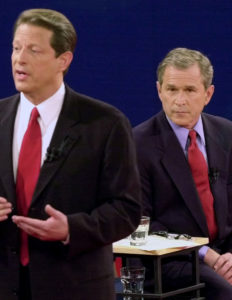
In 2000, Republican George W. Bush won the electoral vote despite trailing Democrat Al Gore by 500,000 popular votes. In 2016, Republican Donald Trump gained the presidency with more than 2 million fewer votes than Democrat Hillary Clinton. These Electoral College jolts, the first such since 1888, fueled enthusiasm for the National Popular Vote Compact, which would bypass Congress and the process for amending the Constitution. Under their authority to appoint electors, legislatures in each state would agree to award its state’s electoral votes to the winner of the national popular vote, regardless of that state’s popular vote. If states controlling a majority of the country’s 538 electoral votes adopted the compact, the winner of the popular vote automatically would win the Electoral College. In fact, if all 50 states and the District of Columbia adopted the compact, each election would result in a unanimous 538-0 electoral-college vote. The system would take effect only if states controlling a majority of electoral votes enacted it. To date, 15 states and the District of Columbia have adopted the compact, putting the notion 74 electoral votes short of a majority.
Proponents call the compact an expression of pure democracy. Embracing the compact, they claim, would eliminate Electoral College contretemps and contingent elections. The New York Times endorses the compact as an “ingenious” idea whose time has come. Opponents maintain that making this change would generate splinter parties. The compact doesn’t require a popular-vote majority, they argue, so a candidate in a three-way race could win the presidency even if 66 percent of voters cast ballots for other candidates. They also question whether the mechanism amounts to an unlawful end-run around Congress and constitutional process. The Wall Street Journal derides the compact as “a too-clever-by-half attempt to circumvent America’s constitutional structure.”
The Electoral College endures. Amending the Constitution requires a two-thirds majority in the House and Senate and ratification by three quarters of the states. Few issues command that degree of consensus and changing the presidential-selection process isn’t one of them.
Despite a continual barrage of criticism, the Electoral College retains significant public support. Immediately after the 2016 election, a Gallup poll showed that 47 percent of the public wanted to keep the Electoral College. A 2019 NBC News/Wall Street Journal poll showed 43 percent of respondents in favor.
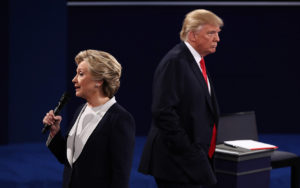
Defenders insist the system fosters moderation and stability by forcing candidates and parties to forge broad coalitions having wide voter appeal. In 58 American presidential elections, only five winners of the popular vote have been denied the White House, they note.
Many in Congress and in party leadership distrust change in this arena because it is hard to predict winners and losers. Better the devilish system you know, they say, even if it is best described as the least worst of its ilk.
_____
Hits and Misses, Electorally Speaking
1800
In 1800 Thomas Jefferson and Aaron Burr prevailed over John Adams and Charles C. Pinckney in both the popular and electoral vote—with a catch. The Constitution then required electors to cast two ballots but barred them from distinguishing between votes for president and those for vice president. To keep running mates from tying, parties usually told one of their electors to cast his second ballot for anyone other than the party’s vice-presidential nominee. Jefferson’s electors didn’t get the word. All cast their second ballots for Burr, who tied with Jefferson, throwing the choice of a president to the outgoing House of Representatives in the nation’s first contingent election.
The departing Congress, dominated by Federalists, faced a Hobson’s choice. Federalists feared Jefferson as a radical but loathed Burr. After 36 ballots and much political maneuvering, the House elected Jefferson on February 17, 1801. To address this kink, Congress enacted the 12th Amendment, requiring electors to distinguish their presidential and vice-presidential votes.
1824
In 1824, the main event was Andrew Jackson, hero of the battle of New Orleans, versus John Quincy Adams, son of the second president. However, there were other significant presidential candidates: Treasury Secretary William H. Crawford and House Speaker Henry Clay. Jackson won the electoral and popular votes, but four candidates won electoral votes, leaving Jackson with 99—32 shy of a majority of the electoral votes cast. The House had to choose among top three finishers Jackson, Adams, and Crawford.
Clay scorned Jackson, scoffing that “killing 2500 Englishmen at N. Orleans” did not qualify a man for “the various, difficult and complicated duties of the Chief Magistracy.” Clay backed Adams in what Jackson supporters called a “corrupt bargain,” claiming Adams had promised to make Clay his secretary of state in return for Clay’s support. On February 9, 1825, the House chose Adams, and Clay did become his secretary of state. Jackson was livid. “Was there ever witnessed such a bare faced corruption in any country before?” he asked.
1876
The race between Republican Rutherford B. Hayes and Democrat Samuel J. Tilden caused an electoral convulsion that still reverberates. Tilden won the popular vote and the electoral vote. However, his 184 electoral votes were one short of a majority. Nineteen electoral votes from South Carolina, Florida, and Louisiana were in limbo because each party claimed victory in those states amid complaints of voting fraud by both sides. In addition, an Oregon elector was disqualified because as a postmaster, he held “an Office of Trust or Profit under the United States.” Gaining one of the disputed electoral votes would win Tilden the presidency. To win, Hayes needed all 20.
Congress had no prece-
dent for resolving disputed state elections, so on January 29, 1877, members voted
to appoint a 15-member Electoral Commission—five senators, five congress-
men, five Supreme Court justices—to decide the election. On February 27, 1877, commissioners voted 8-7 on party lines to award Hayes all 20 disputed electoral votes, giving him 185, one more than Tilden. To get Democrats, many from former Confederate states, to acquiesce in electing Hayes, the Republicans promised to end Reconstruction and
U.S. Army occupation of
the South.
Tilden accepted defeat with grace. “Be of good cheer,” he told supporters. “The Republic will live.” However, in the South, the end of Reconstruction led to nearly a century of Jim Crow oppression and racial segregation, scars of which linger.
1888, 2000, and 2016
The general ticket’s prevalence can translate into elections in which the winner of the popular vote loses in the Electoral College. That happened in in 1888, when Benjamin Harrison defeated Grover Cleveland, in 2000, when George W. Bush beat Al Gore, and in 2016, when Donald Trump

